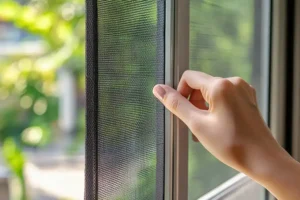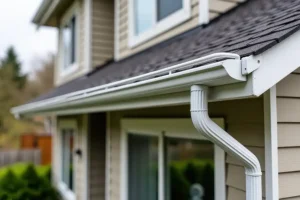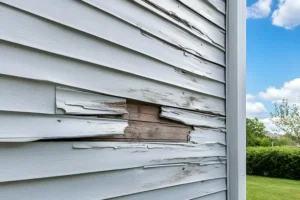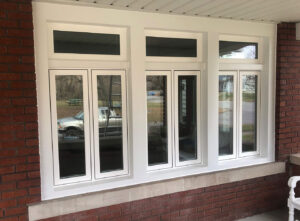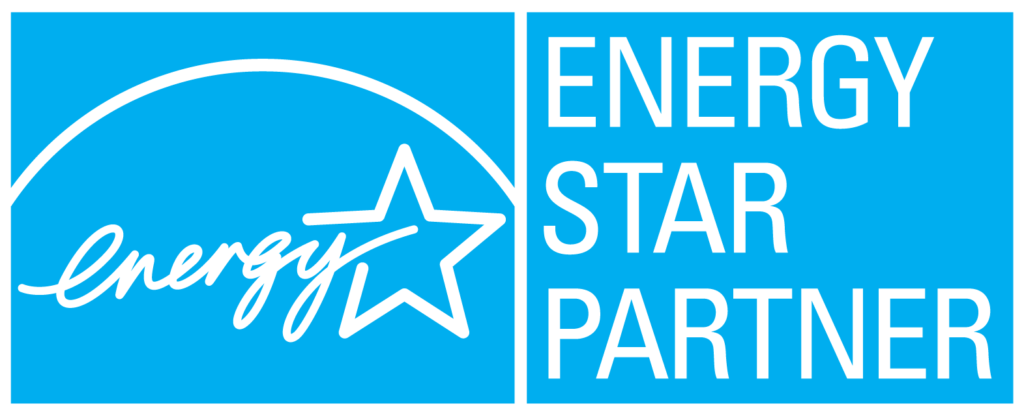When it comes to choosing siding materials for your home, you want a material that enhances curb appeal while offering durability and cost-effectiveness. At Energy Efficient Replacements in Granger, IN, we understand the significance of selecting the right siding. In this blog, we’ll compare vinyl, wood, and fiber cement siding across key features such as durability, aesthetics, cost, maintenance, energy efficiency, and environmental impact. By the end, you’ll have a clearer understanding of which option suits your home best.
Durability
Durability is a primary concern for homeowners when selecting siding. Vinyl siding is renowned for its resistance to weathering, pests, and rot. It doesn’t chip, peel, or fade easily, making it a long-lasting option. However, it can become brittle in extreme cold and may crack upon impact. Wood siding, while beautiful, is less durable. It’s susceptible to termites, rot, and weather damage, requiring frequent maintenance to ensure longevity. Fiber cement siding is the most durable of the three, combining the best aspects of wood and vinyl. It’s resistant to termites, rot, and weather conditions, and it doesn’t warp or crack easily. Choosing fiber cement means you’ll likely need fewer repairs over the years, making it a sturdy and reliable choice for your home.
Aesthetics
Aesthetics play a crucial role in the selection of siding as it significantly affects the appearance of your home. Vinyl siding comes in various colors and styles, mimicking the look of wood or stone, but it often lacks the authentic feel of natural materials. Wood siding, on the other hand, offers a timeless, classic appeal. Its natural grain and texture provide a warm, inviting look that can be customized with stains or paints. Fiber cement siding offers the best of both worlds. It can be manufactured to mimic the appearance of wood, stone, or brick, providing a wide range of aesthetic options while maintaining the resilience of fiber cement. Homeowners seeking a blend of beauty and durability often prefer fiber cement for its versatile and authentic look.
Cost
Cost is a significant factor for many homeowners when deciding on siding. Vinyl siding is generally the most affordable option. Its lower material and installation costs make it an attractive choice for budget-conscious homeowners. Wood siding tends to be more expensive due to the cost of the material itself and the labor-intensive installation process. Additionally, the ongoing maintenance costs for wood can add up over time. Fiber cement siding falls in between vinyl and wood in terms of cost. While more expensive than vinyl, it’s typically less costly than wood, especially when considering its low maintenance requirements. Over the long term, fiber cement’s durability and minimal upkeep can offer cost savings, making it a wise investment.
Maintenance
Maintenance requirements can greatly influence the choice of siding material. Vinyl siding is relatively low maintenance; occasional washing with soap and water is usually sufficient to keep it looking new. However, it may need repairs if it cracks or fades over time. Wood siding demands the highest level of maintenance. It requires regular painting or staining and inspections for termite damage and rot, which can be time-consuming and costly. Fiber cement siding is low maintenance, like vinyl. It requires minimal upkeep beyond occasional cleaning and repainting every 10-15 years. Its resistance to pests and weathering also reduces the need for frequent repairs, making it a practical choice for busy homeowners. When your siding needs professional maintenance services, contact our team of experts at Energy Efficient Replacements.
Energy Efficiency
Energy efficiency is another crucial consideration for homeowners. Vinyl siding can be insulated, improving its energy efficiency by reducing heat loss and lowering utility bills. However, standard vinyl siding without insulation doesn’t offer significant energy savings. Wood siding provides moderate insulation but doesn’t compare to modern materials designed for energy efficiency. Fiber cement siding, while not inherently insulating, can be installed over an insulating layer, enhancing its energy efficiency. When properly installed with appropriate insulation, fiber cement siding can contribute significantly to reducing energy consumption, making it an eco-friendly and cost-effective option for energy-conscious homeowners.
Environmental Impact
The environmental impact of siding materials is increasingly important to many homeowners. Vinyl siding, made from PVC, has a significant environmental footprint due to its production and disposal processes, which can release harmful chemicals. Wood siding, being a natural material, is more eco-friendly if sourced sustainably. However, the need for regular treatments with chemicals to prevent decay can diminish its environmental benefits. Fiber cement siding stands out as a more sustainable option. Made from a mix of cement, sand, and cellulose fibers, it’s durable and recyclable. Its long lifespan and low maintenance requirements reduce the environmental impact over time, making it a greener choice for environmentally conscious homeowners.
Trust Energy Efficient Replacements to Match You with the Best Siding Materials
Choosing the right siding for your home involves balancing durability, aesthetics, cost, maintenance, energy efficiency, and environmental impact. At Energy Efficient Replacements in Granger, IN, we are dedicated to helping you make an informed decision and providing top-notch installation and maintenance services. Our professionals ensure your siding is not only beautiful but also capable of withstanding the elements for years to come. Call 574.387.3297 to discuss your siding needs and let us help you achieve a safe, secure, and energy-efficient home. We guarantee you’ll love the results.


